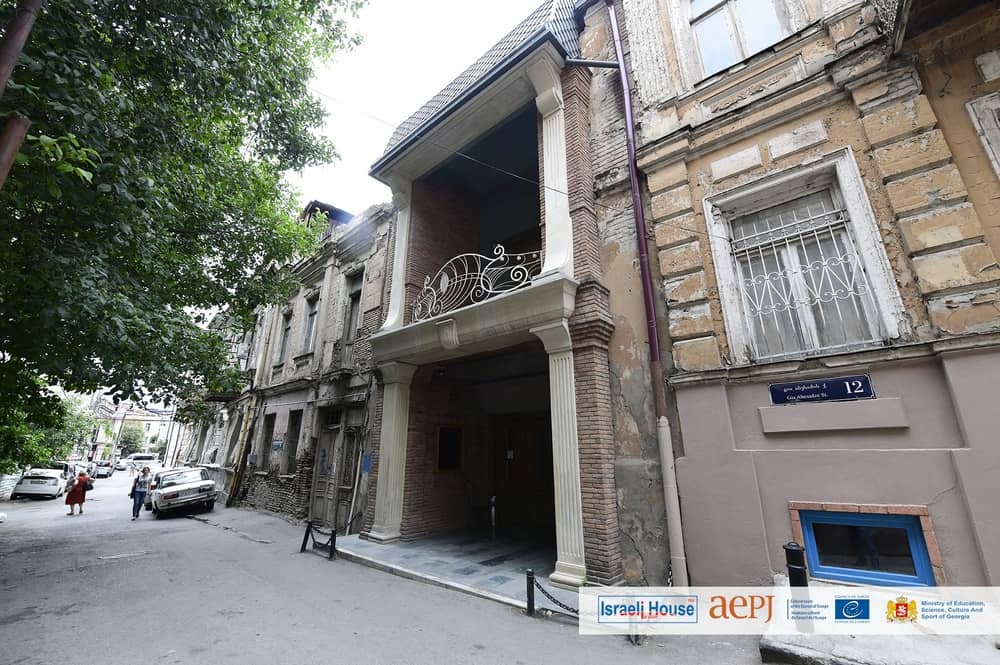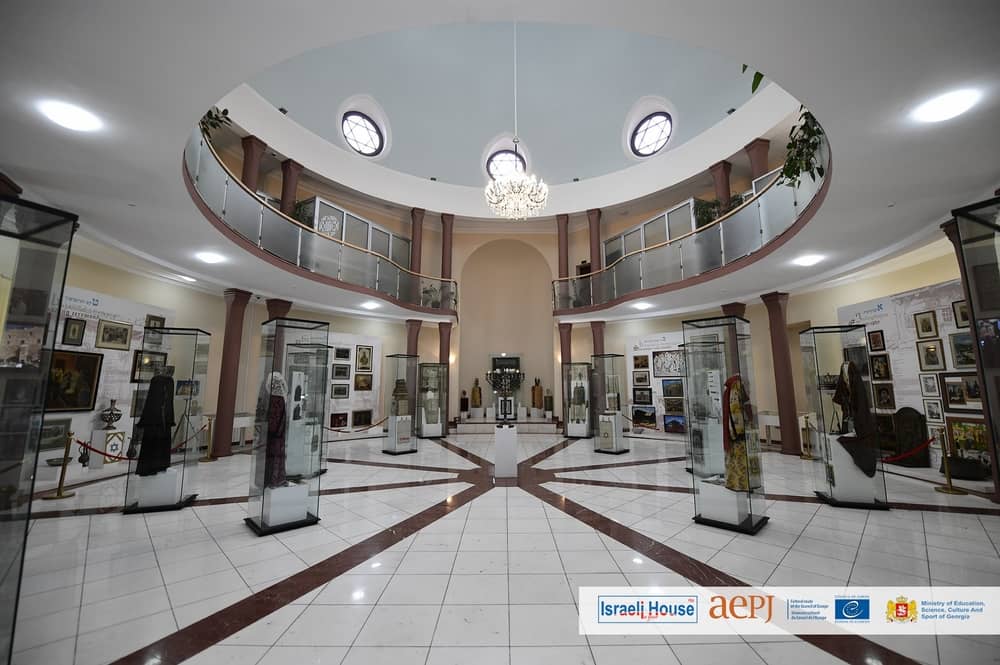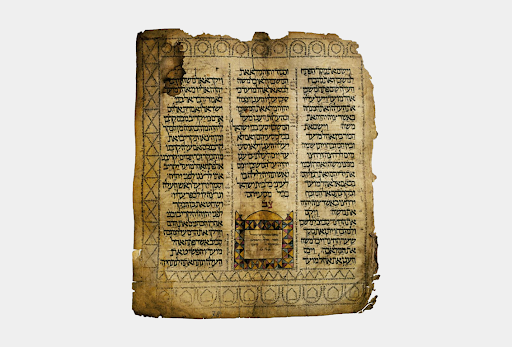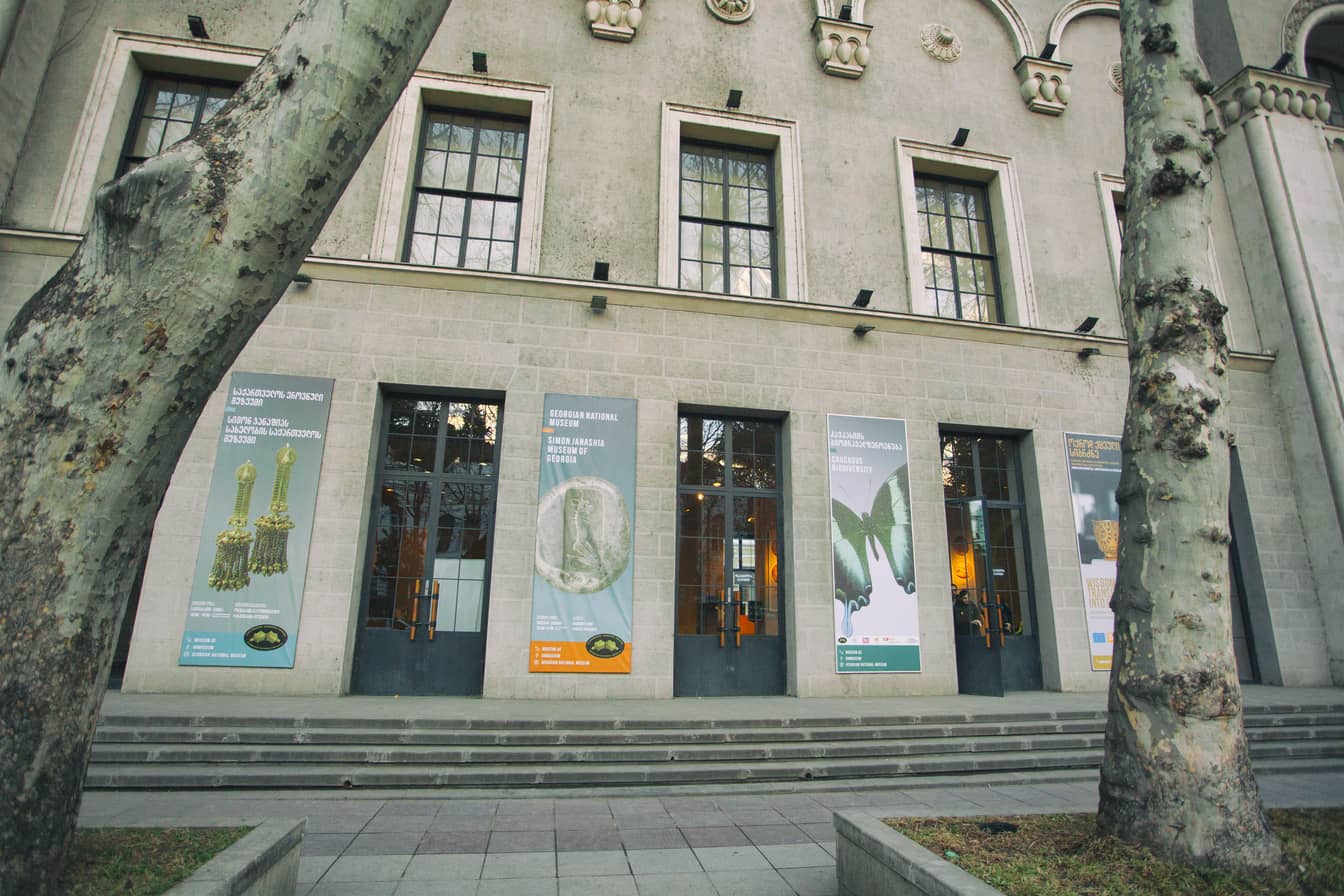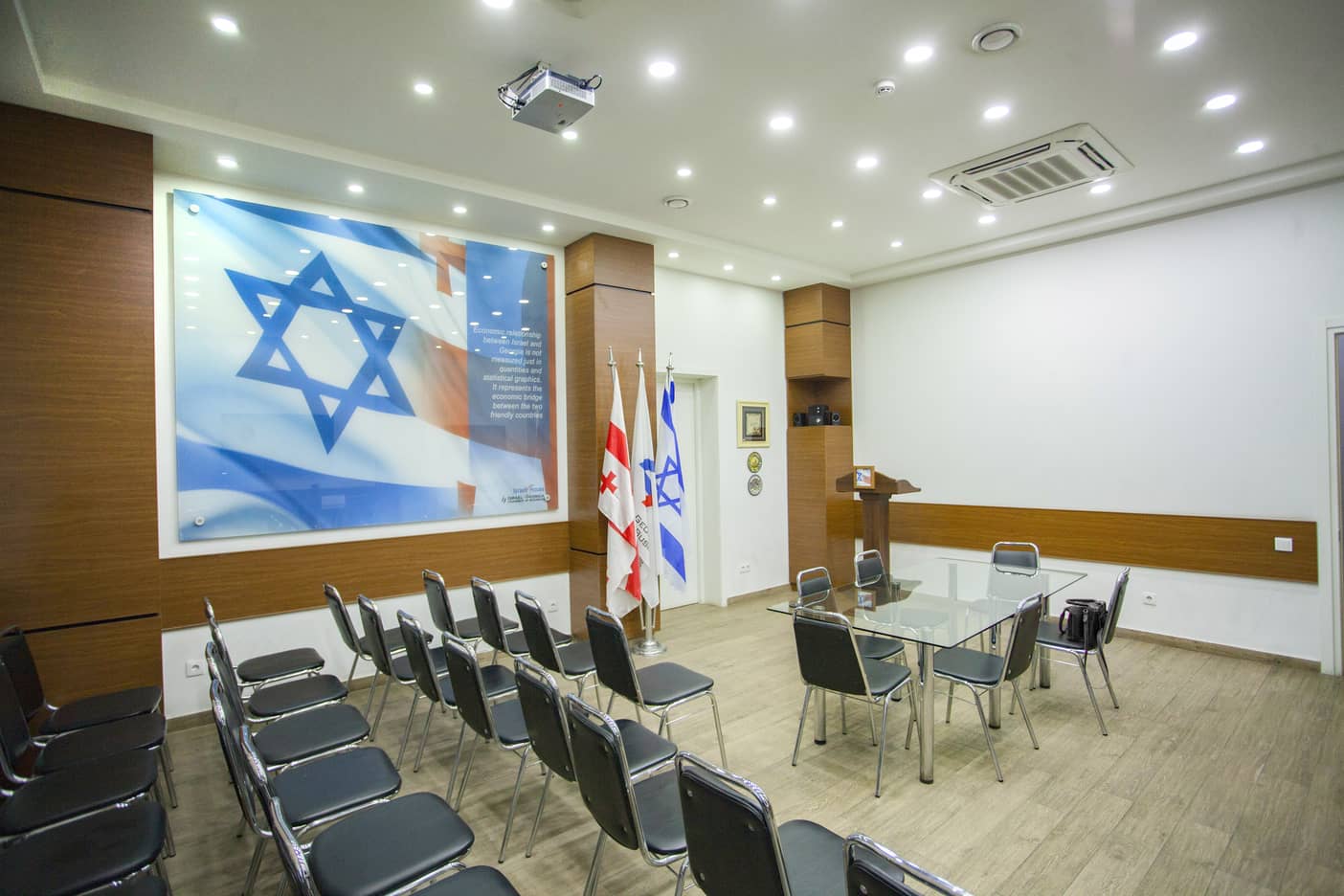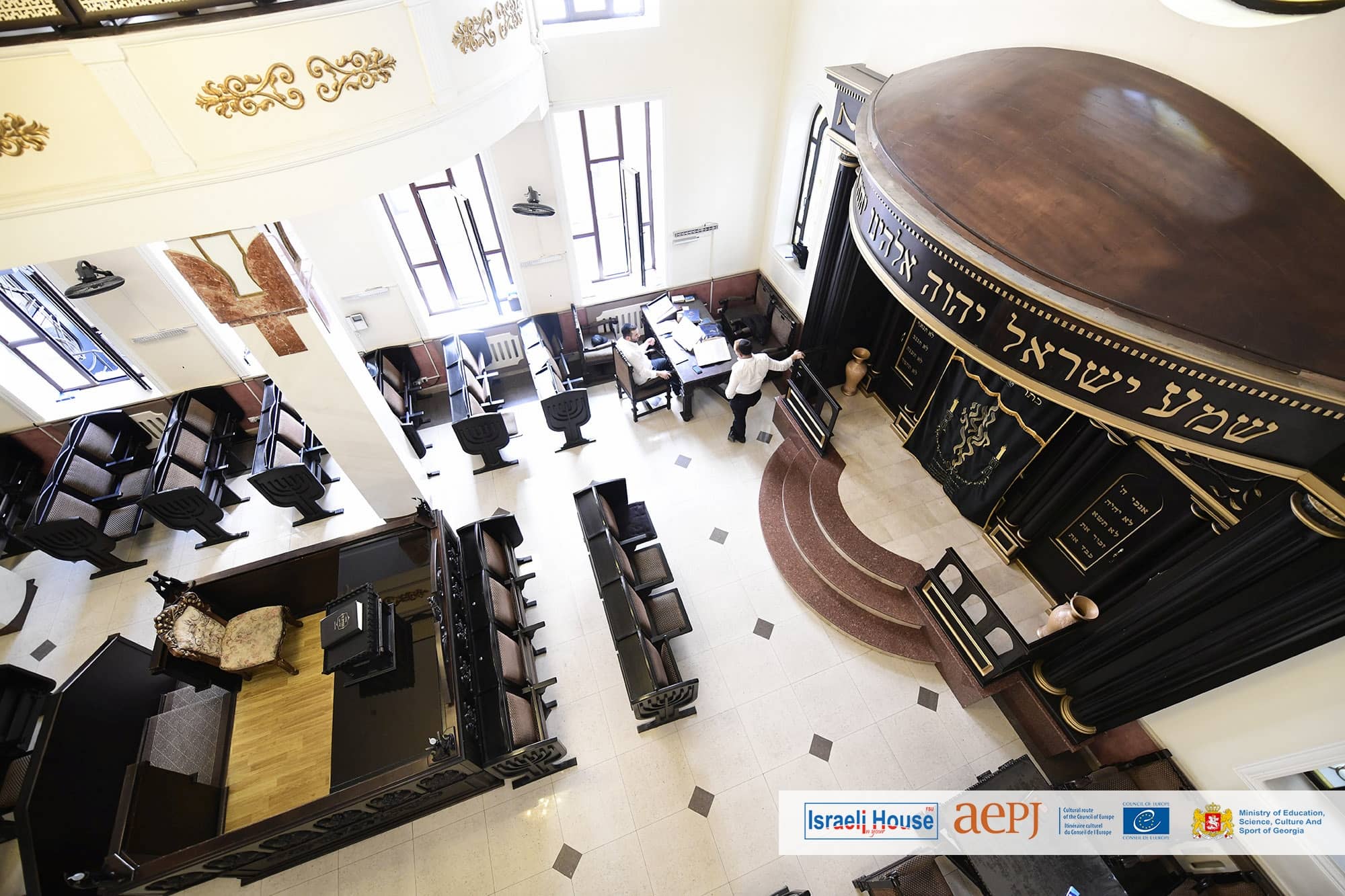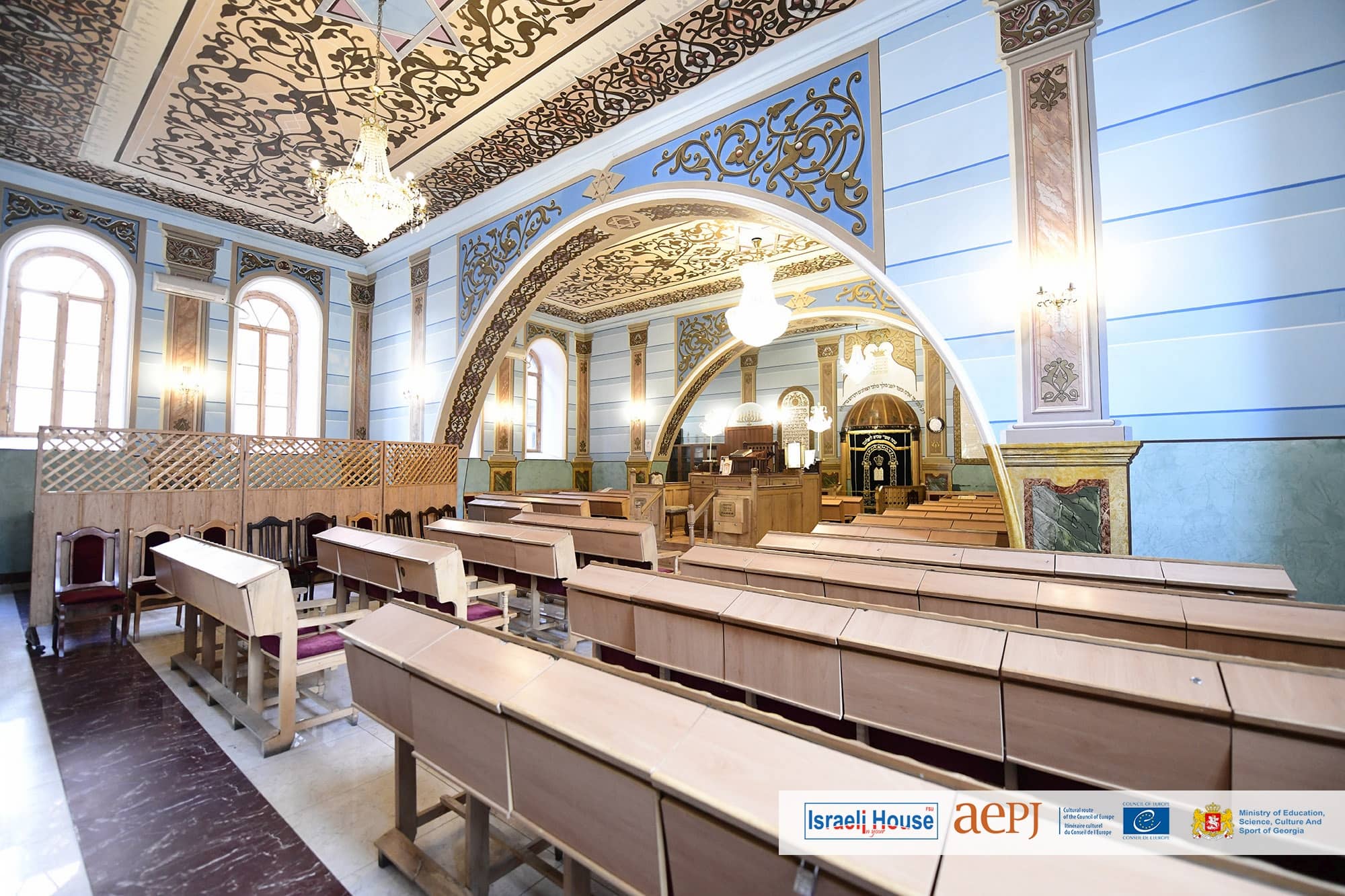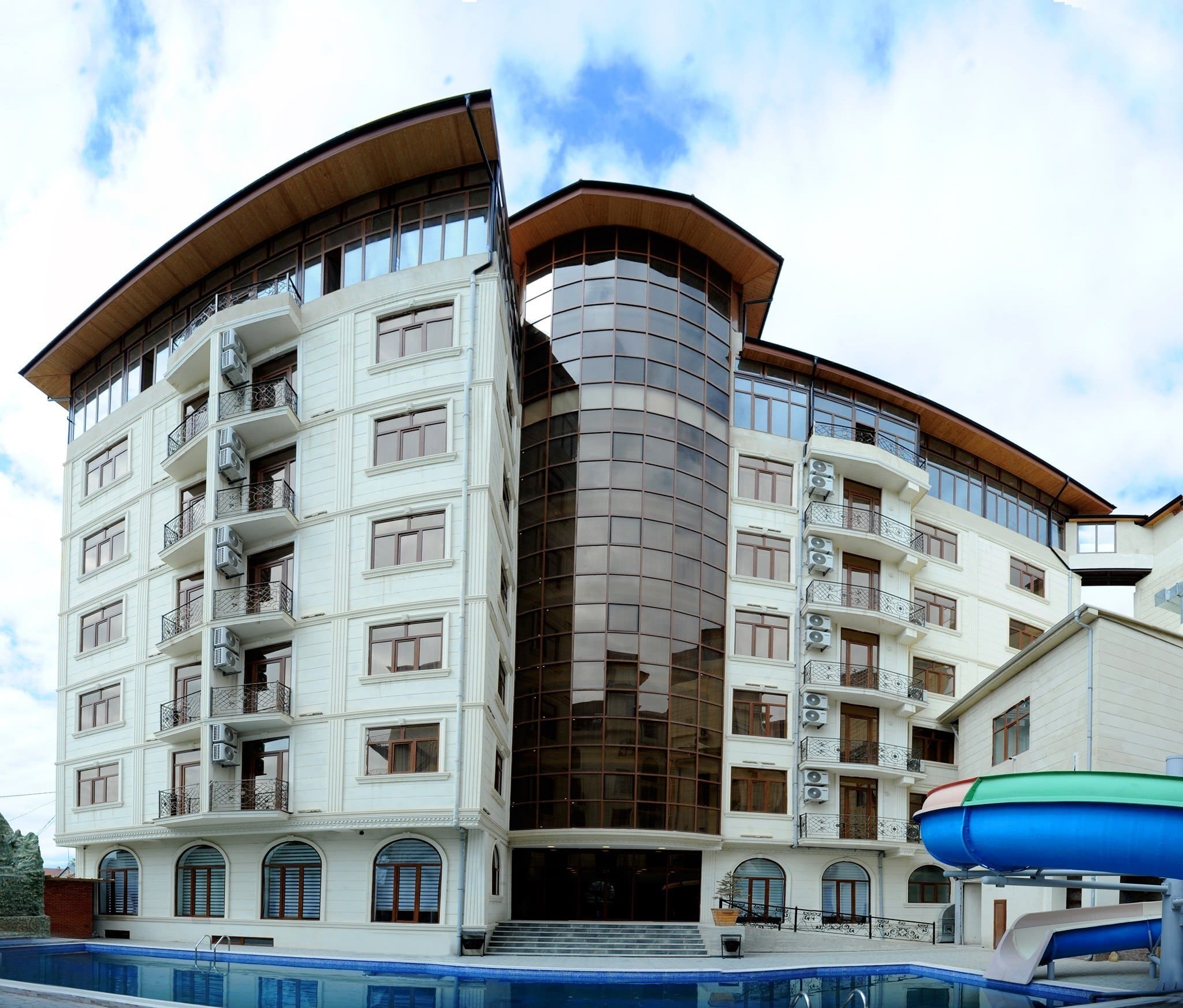This synagogue, located on Abesadze street, Tbilisi, is now functioning as the Royal District Theatre. In 1887, Jewish community of Tbilisi started collecting funds to construct a new synagogue on the land of the existing one. The construction process started in 1903. The synagogue was solemnly opened in 1918, however in 1923 it was closed. In 1928 the Committee for Helping The Neediest Jews started using the building. In 1932, the former synagogue was transformed into Jewish Culture House. The Royal District Theatre has been functioning in this building since 1997. The building has the status of cultural heritage. Despite the fact that, in 2001, the court granted Jewish community co-ownership of the building, the court decision has never been enforced.
Archives: Directory listings
Directory listings
David Baazov Museum of History of Jews of Georgia
The David Baazov Museum of History of Jews of Georgia, located on 3 Anton Catholicos St, Tbilisi, is a principal museum of the Jewish history and culture. It was established on 30 November of 1932 by the board of Garebcom as a department organization – in a cult-base of Jewish workers. It was officially established on 23 November of 1933 – demanded by the social commissariat of Georgian education. The building is built by brick; from outside it has multiple angles, while inside is round. The museum has many exhibits and rarities: archeological, ethnographic, historical, epigraphic, manuscript, printed, artistic, archives, photographs, etc. The museum has published important scientific works for Kartvelology/Georgian studies and 9 volumes of Hebrew studies. Expeditions are held by the museum in different parts of Georgia, exhibitions, international scientific conferences dedicated to the issues of the history of Georgian Jews, Georgian-Jewish and Georgian-Palestinian relations.
Georgian National Centre of Manuscripts
The Georgian National Centre of Manuscripts, located in Tbilisi, Georgia, is a repository of ancient manuscripts, of historical documents and of the private archives by eminent public figures. One of the most significant manuscripts kept in the museum is the Lailashi Bible, which was found in Lailashi village by Giorgi Tsereteli. The manuscript was brought to Georgia in the 1940s and was kept in the Museum of History of Jews until 1951. Since 1957 the manuscript has been kept in the Georgian National Centre of Manuscripts. The Lailashi Bible represents a handwritten version of Torah, accompanied with comments and colorful geometrical decorative figures. It’s also unique due to the fact that it had Jewish inscriptions and some of the geometrical decorations are colorful. The manuscript is written on parchment and is an old testament with masoretic text, which tells us a story of the first humans, the first sin and its consequences, the despature from heaven and the multiplication of humankind, but the Lailashi Bible is considered unexplored due to an assumption that it lacks sixteen pages. A paleographic analysis of the manuscript makes it possible to suggest that it belongs to the X-XI centuries. The manuscript weighs 10 Kilos. There are very few Torahs, around the world, that are made in such a way, mostly Torah is written on a scroll, while the Lailashi bible is a book, which makes it very rare for this period. The book is broken up at the moment, it is bound and doesn’t have a cover, since it needs restoration. The Lailashi bible has always been the center of attention, even criminals were interested in it and attempted to steal it in the 90s. The guard of The Georgian National Centre of Manuscripts was offered 50,000 dollars for the manuscript, but the guard did not give in.
Georgian National Museum
The Georgian National Museum, the biggest union of the country’s leading museums, is a scientific, educational and cultural center. The Georgian National Museum delivers special attention to the study, restoration, conservation and promotion of Jewish collections. Part of the Jewish collections of the Georgian National Museum is presented at the exposition of David Baazov Museum of History of the Jews and Georgian-Jewish Relations. In 2006, 2008, 2010, 2012 Georgian National Museum has held four exhibitions and published three catalogues all dedicated to Jewish collections. And through the projects implemented over the last decade, it became possible to regulate the collections, prepare exhibitions and publications. Exhibitions of Jewish collections presented the culture and the lifestyle of Goergian Jews in the forms of objects used for rituals, everyday life, religious; transcripts; costumes; accessories; amulets; photos, etc. One of the notable items that is kept in Georgian National Museum is the Armazi Bilingual, also referred to as the Stele of Serap. It is dated as the year of 150 and was found in Armaziskhevi, Mtskheta on 25 November of 1940. The bilingual Greco-Aramaic tombstone inscription commemorates the short-lived Serapita and her noble lineage. It contains an unusual, in its ductus and some of its forms, version of the Aramaic alphabet which came to be known as the “Armazi script” although it can also be found outside Armazi, in other parts of Georgia. The discovery of this bilingual revealed many political and cultural parts of the country in the I century, such as institutes in the kingdom and the king of Iberia himself.
Israeli House
The Israeli House NET (NGO) was established in 2013 in Tbilisi and works to achieve solidarity by public diplomacy and enhance the cooperation between Israel and friendly states, among them Georgia. One of the important goals is to promote the Jewish Heritage, and present it a bridge between Georgia, Israel and the World Jewry, and also to promote the remembrance of the Holocaust.
At the Israeli House NET, lectures on topics related to Israel, and Jewish Culture and Heritage are conducted regularly. Also, meetings, exhibitions, presentations and seminars are organized in the cultural, economic, business, technological or political spheres.
The organization’s Advisory Board includes international representatives: diplomats, leading businessmen, heads of the international organizations, academic staff and public figures.
The initiator of the organization is Itsik Moshe, the president of the Israel-Georgia Chamber of Business and the first representative of the World Jewish Agency “Sokhnut” in 1990-s when the “Great Aliyah” started from the USSR.
Ashkenazi Synagogue in Tbilisi
The Ashkenazi Synagogue, also known as Beit Rachel, was constructed by brick by the Jews of Tskhinvali in the 1910s. At first it was built for the Jews, who came from Iran and Kurdistan, but during soviet period most of them emigrated and this synagogue moved into the hands of Ashkanazi Jews. This is an active synagogue and it is located in the old Tbilisi, which is a historical district. The Ashkenazi Synagogue had been on the verge of collapse for a long time. Its first restructuring took place in the 1970s. The building was very damaged in 2001 due to an earthquake and needed capital restructuring. Jews living in Tbilisi and Moscow donated money to restore the synagogue, and it was renovated in 2007. In 2009 the re-opening of the newly redesigned Beit Rachel was celebrated. At first the synagogue was just one floor, but after the reconstructure the land was dug and a prayer room was placed on the floor under. Today the condition of the building is fair.
Great Synagogue
The Great Synagogue is located in the old historical district of Tbilisi, specifically in between of Tumaniani and Leselidze streets. The building, also known as “Synagogue of the Akhaltsikhelians”, was built in 1910 by Georgian Jews from Akhaltsikhe, hence the mention of the people from Akhaltsikhe in its second name. According to the journal “Droeba”, which was issued in the year 1909, constructing the building was a struggle because of its size, but due to the determination of the Georgian Jews it was set up. Edifice has two floors, the first of which is divided into four structural parts. The floors are partly similar, with some differences in their design. It is built by red brick and inside is painted with plant based motives, ornaments and orderial variations. The Synagogue was reconstructed in 2011-2012 years and the condition of the building is fair and active. Today, the Great Synagogue of Tbilisi is one of the most important tourist attractions in the city and it has a status of a cultural monument given by “Ministry of Culture and Sports of Georgia”. As it turns out, the synagogue has more than dozens of visitors daily, mainly tourists from Israel.
Givat Shmuel Food Fair
The Farmers Market takes place every Friday between the hours of 08:00-15:00 in the parking lot of a shopping mall in, Givat Shmuel. This market is part of a series of a chain of farmer’s markets that take place in Tel Aviv, Herzliya and Raanana. There is a variety of food stalls which include the produce from the best farmers, cheese-makers and bakers. In this market you are guaranteed to find a wide selection of the freshest vegetables, fruits, herbs, cheese, breads and olive oils as well as a large assortment of tasty homemade products.
Shahdag Guba and Truskavets Sanatorium
Shahdag Guba & Truskavets Medical Sanatorium is located in the center of Guba, in a pleasant corner on the banks of the Gudyalchay River, near Nizami Park. Once upon a time, there was a hotel complex called “Shahdag” in the Soviet era, but now the hotel has become a treatment and sanatorium complex equipped with the latest medical equipment, which is a source of healing for many diseases. It is also the second hotel of Shahdag Guba
Treatment tubs from Truskavets have been delivered to the Shahdag Guba & Truskavets Medical Sanatorium, based on the expertise of medical sanatoriums in this Ukrainian resort town.
Eilat Food Festival
The festival affords visitors the opportunity to taste dozens of dishes, including sandwiches and desserts, as well as alcoholic drinks. All the food carts are located in the same area, so visitors can easily test out restaurant after restaurant to see what local eateries have to offer. For three consecutive nights, visitors can taste dishes from well-known Eilat restaurants, chef’s restaurants, and fast food places, against the enthralling beauty of the Gulf of Eilat and the Red Sea. The carts feature all types of dishes – meat, fish, sandwiches, and pizzas – including decadent desserts, boutique beers, cocktails, and special chef’s dishes.
Between bites, visitors may enjoy the many musical performances by some of Israel’s leading artists, including afternoon shows by pop stars beloved by Israeli kids to live performances for adults at night. The performances are free of charge and the dishes offered at the food carts are generally sold at low prices.
Visitors to the Eilat Food Festival can also enjoy everything else the city has to offer during their stay. During the day, the beaches are an obvious option. And if you need a fix of adrenalin, several extreme water sports are available all along the Red Sea shore. Within the city, you can shop for virtually anything without paying VAT as well as enjoy attractions suitable to the entire family. And don’t forget to leave room in your tummy for the evening meal!
The official date for next year’s event will be announced on the event’s website.
